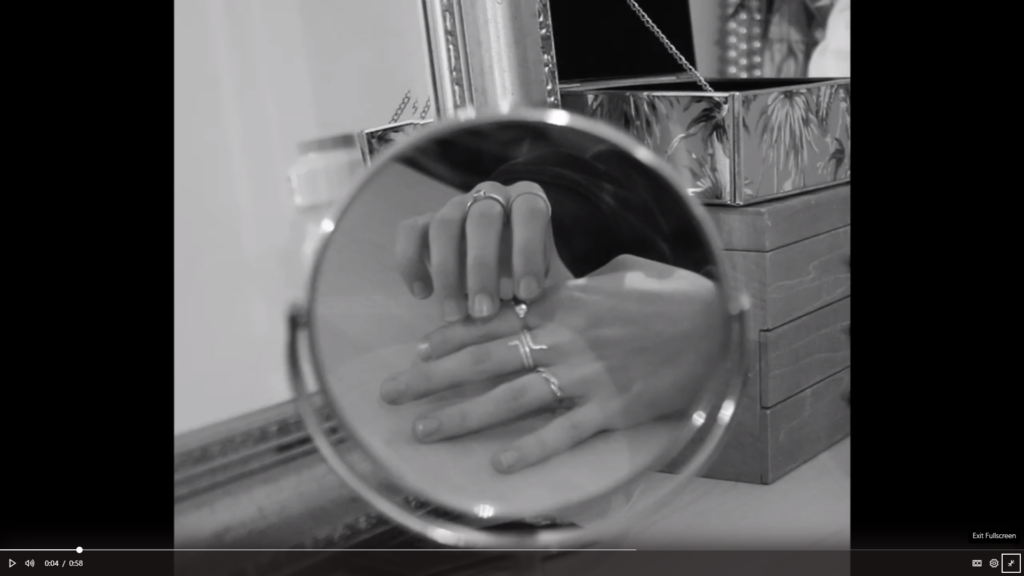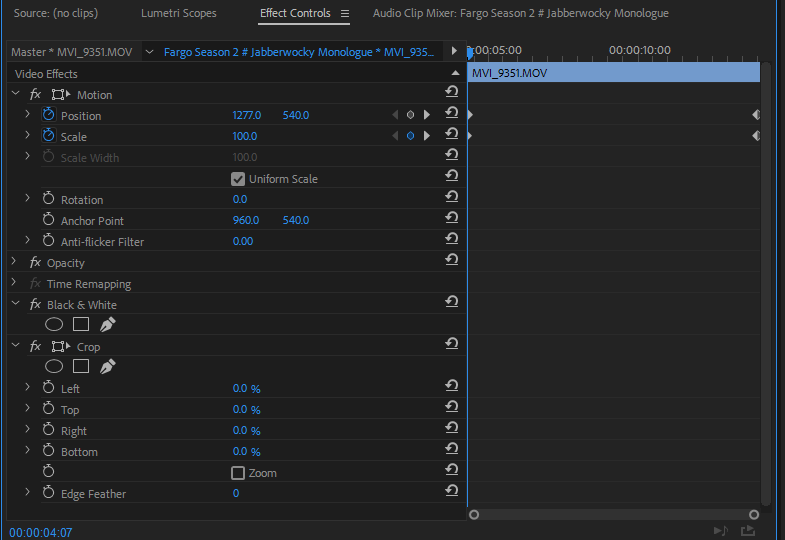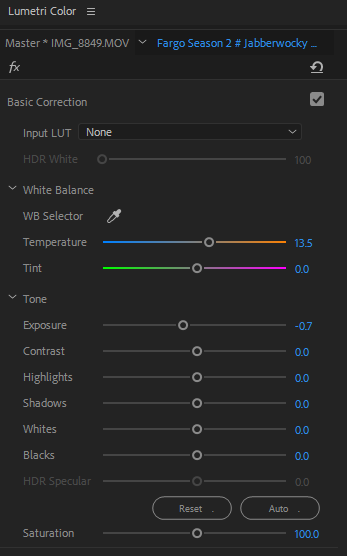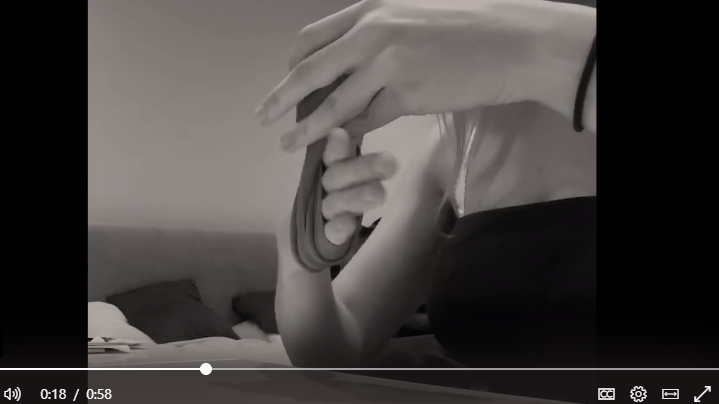Editing the footage

In the Effects column, I selected the black & white filter within Image control to quickly apply a monochrome effect to all the footage within the film. This allowed me to keep the main focus on the subject within the film rather than the surroundings. To amplify this, I chose bright lighting and darker clothing during the shooting to increase the contrast.
Using the crop tool to transform the film, I readjusted the size ratio of the film into a square. The square format is renowned for being an effective ratio when creating artistic images.


For a few clips within the film, we placed them into reverse. This allowed us to show the inner turmoil of our subject. Scenes where the subject is taking off make up and jewelry were reversed to make it appear as though they are reapplying.
This enhances the idea of conformity that runs throughout our film. Despite wanting to diverge from social norms, the subject unwillingly reverts back to the standards of society.

Within Effect controls, I wanted to create a slow zoom into and out of chosen scenes, so as to increase the tension. These slow zooms paired well with the sound of our film to help create a narrative for our audience. The zooming in on stagnant clips allowed for focus on the audio and the sound effects within it, which created a sinister and disquieting mood.

To ensure the aesthetic of our film was maintained, I increased the temperature of certain shots and decreased the exposure as some scenes were filmed in more harsh lighting and didn’t blend well with the other clips. Additionally, some scenes of the film were left with these cooler, harsher tones so as to show the importance as we reached the peak intensity of the film. These scenes showed the conformity of our subject and juxtaposed the discovery of the subject’s identity.

Editing the sound
I wanted the first scene to catch the viewers’ attention. To do this, I placed the sound so as to start before the first shot can be seen. The first part of the poem starts with two words ‘Twas brillig’, then a pause occurs. I placed it so that the shot appears on the end of the second word, which is pronounced with a plosive G. This breaks the tension that was built up during the exposition of the film.
I didn’t start the film at 0 seconds in order to build up tension before the first scene. The sound starts with a silence, and some static from our sound to catch the viewers attention. Additionally, the end of the film ends similarly to the exposition. The film cuts off before the sound does and the viewer is left with a black screen and a short couple of seconds of audio to build the tension, show the inner turmoil of the subject and leave the audience asking questions.
Naming the Film: The Pursuit of Social acceptance
In deciding the name of this film, we thought thought about conformity and confinement that people experience regardless of whether they present themselves to be accepted or rejected by society.
In accepting and following social norms and beauty standards, many feel confined to one appearance and one identity that conforms to societal ideals. This ‘pursuit’ results in acceptance but can also make individuals feel confined to one singular appearance that doesn’t fully represent who they are and what their identity is.
On the other hand, in rejecting and abolishing social norms, individuals are secluding themselves and removing themselves from the gender binaries of society. Though it sounds liberating that they can freely express their identity, it results in a different sense of confinement: that they are confined to their own identity, rejected by society and looked down upon for expressing themselves. This results in a need to gain validation and can often lead to people re-conforming to the standards they attempted to escape in the first place.
